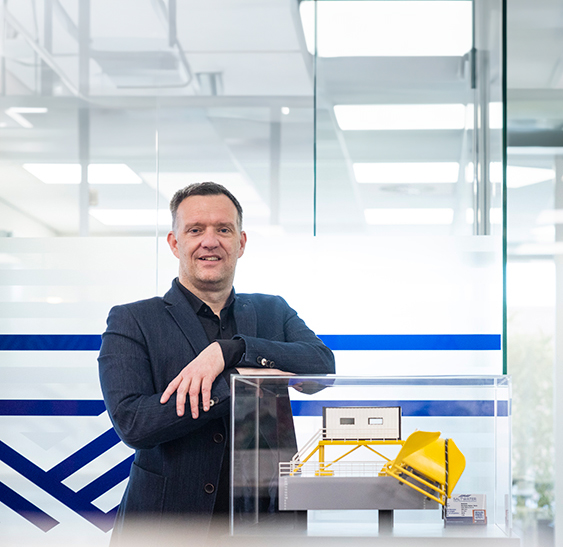Floating offshore wind
energizes our future
Offshore wind energy is a certainty. But the growing demand for energy requires economic use of our sources. If deployed wisely, floating offshore wind can be the solution.
Offshore wind energy is a certainty. But the growing demand for energy requires economic use of our sources. If deployed wisely, floating offshore wind can be the solution.
Introducing

Offshore wind energy and the accompanying wind farms that are visible from almost every coastline are here to stay. Due to the growing demand for energy more wind must be harvested. Within a few years, it is expected that 40% of wind farms worldwide will consist of floating wind turbines as energy obtained from floating wind parks will contribute to the success of renewable energy. Provided the right steps are taken, floating wind energy is expected to deliver a total capacity of 12 GW by 2030 and 39 GW by 2035.
While monopiles are usually installed in water depths up to 50 meters, 80% of the world’s offshore wind resource potential lies in waters deeper than 60 meters. Obviously, areas farther away from the coast and deeper waters must be developed. Over the next few years, the energy market is expected to significantly increase the number of floating wind turbines installations.
As wind energy projects continue to expand, they are venturing farther away from the coastline. This trend is particularly evident in well-established markets where the sites closer to the shore have already been utilized. This shift presents a set of additional challenges in both the construction and operation phases of these projects. Notably, it necessitates the transportation of crews, equipment, and vessels from more distant locations. One potential bottleneck which could slow offshore wind installation is the availability of suitable vessels.
In the past decade MW-scale floating technologies have been tested through demonstration and pilot projects in both Europe and Asia.
Floater production is not industrialised yet and development has just entered the pre-commercial phase, with a focus moving to larger first of a generation schemes.
Installation rates will continue to increase and project size will grow, contributing to rapid cost reduction.
The European Green Deal pushes governments to take serious action. To reach the 2030 climate goals, the European energy system must be decarbonized. On top of that, there is EU´s long-term strategy to obtain a zero-emission climate by 2050. On the other hand, EU’s electricity system will be more than double by 2050 with wind energy forming 50% of the electricity mix.
Renewable energy targets however greatly depend on the national governments and their power to translate ambitions into solid rules and regulations. Not having any policy will jeopardize predictions; a risk we cannot afford to take.
With the right physical conditions in place, floating offshore wind technology is ready to accelerate. The only question is, in what direction will it go? How will the market react? Floating offshore wind technology is suitable for deployment in deeper water, such as the Pacific. And it is more nascent both commercially and technically than the fixed-bottom substructures planned for deployment in waters along much of the Atlantic Coast. Which areas will be selected for the development of offshore floating wind farms? Will it be off the coast of the USA, the UK (Scotland), South Korea, Japan or Norway? Time will tell. One thing is sure, floating wind is here to stay!

Saltwater presents Blue Sky, a Service operation vessel, specially designed for the emerging offshore wind market.
We are committed to design and develop maritime solutions that reduce the environmental impact and support a low carbon footprint. To deliver innovative and efficient engineering services that meet the needs of our clients and to act as a frontrunner to provide sustainable solutions for the maritime industry. Our strength and strategic choice to focus on both the conversion and the new building market allows us to deliver the best of both worlds to our customers.
We anticipate a massive growth in the sector of wind-, solar energy, open ocean aquaculture and other similar sustainable sectors of the industry where specialized assets such as survey-, construction- and maintenance vessels are required. All of which can potentially be transposed on the existing global vessel fleet by conversion/refit or dedicated new builds.

Market outlook
The market appears highly promising, with continual advancements in technology and a growing commitment to sustainable energy solutions. Read more about Saltwater’s outlook on the different impacted market segments.
The expertise of Saltwater in practice
This website uses cookies so that we can provide you with the best user experience possible. Cookie information is stored in your browser and performs functions such as recognising you when you return to our website and helping our team to understand which sections of the website you find most interesting and useful.
Strictly Necessary Cookie should be enabled at all times so that we can save your preferences for cookie settings.
If you disable this cookie, we will not be able to save your preferences. This means that every time you visit this website you will need to enable or disable cookies again.
More information about our Cookie Policy